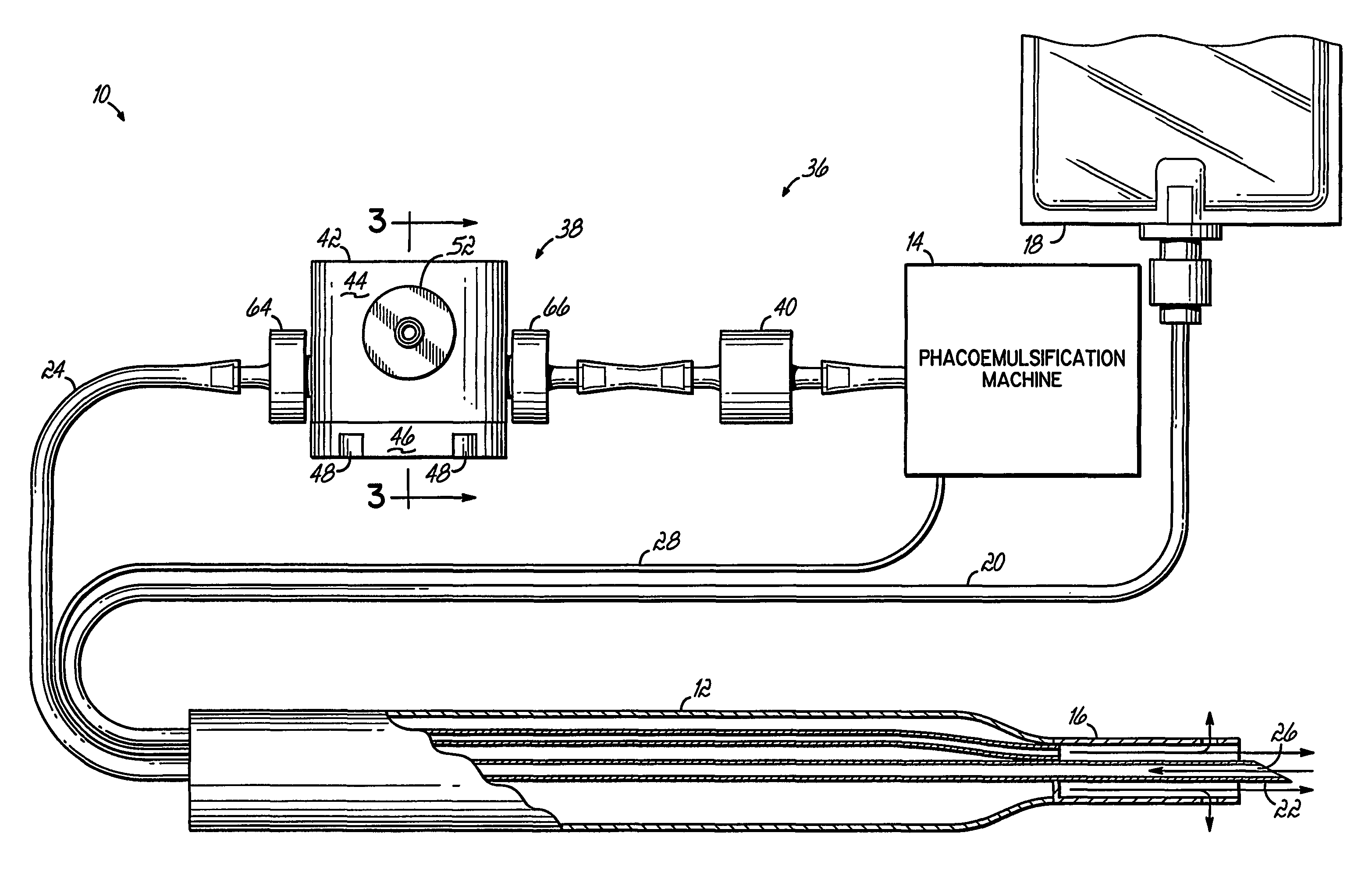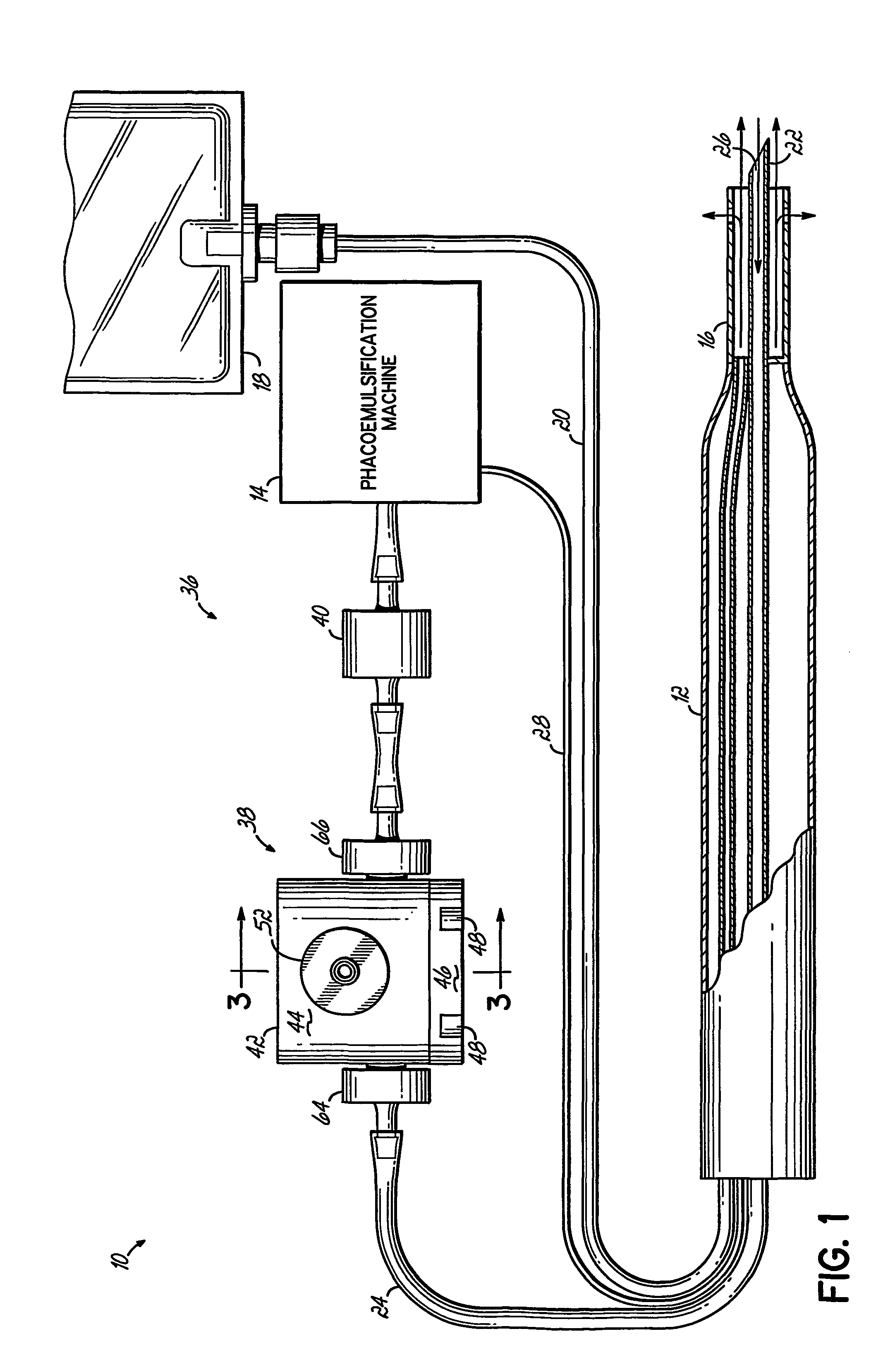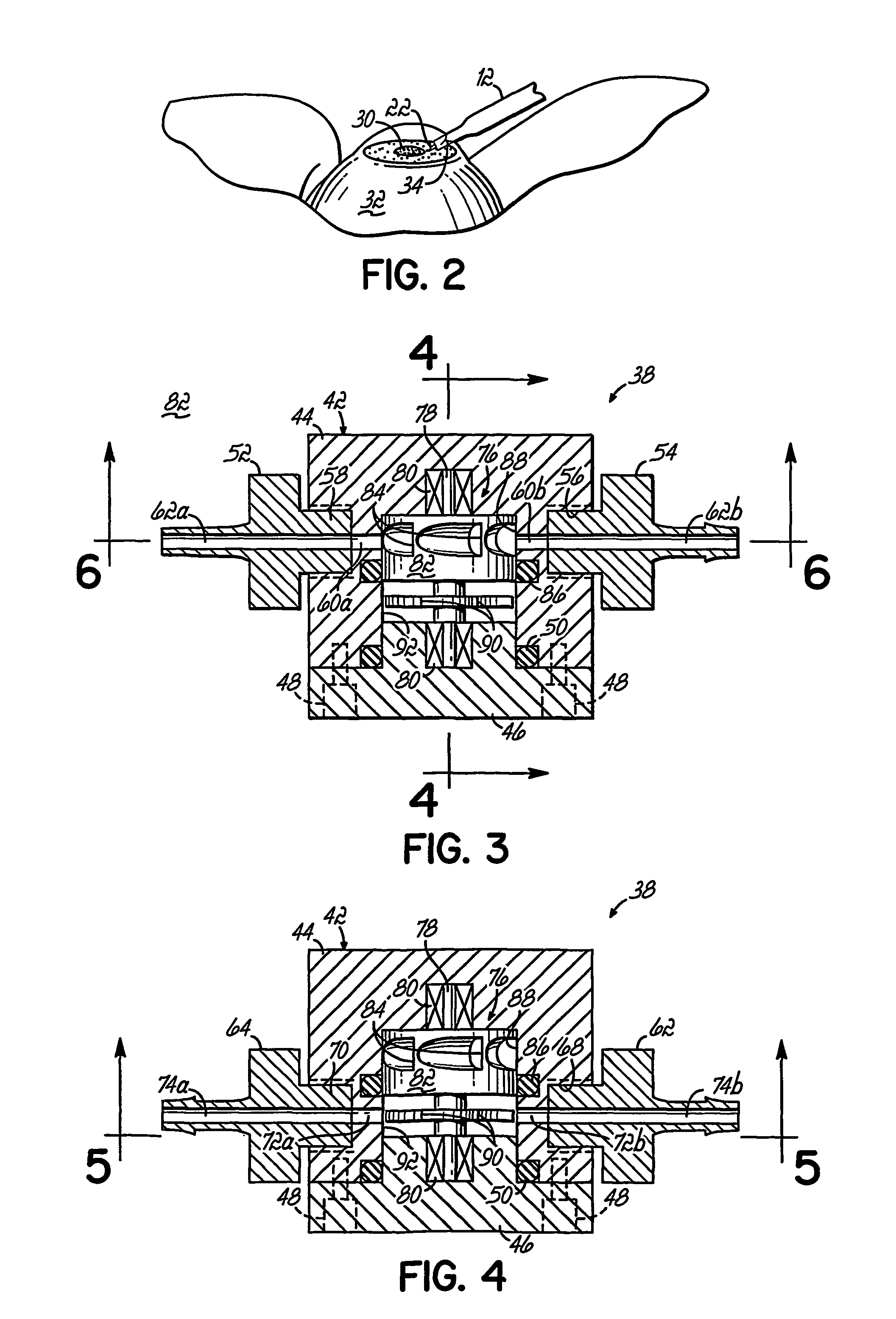Surge-flow regulator for use in ophthalmic surgical aspiration
a technology of ophthalmic surgical aspiration and valve regulator, which is applied in the field of ophthalmic surgical instruments, can solve the problems of occlusion break, handpiece tip occluded with debris, and parameters are at risk of sudden collapse of the anterior chamber of the eye,
- Summary
- Abstract
- Description
- Claims
- Application Information
AI Technical Summary
Benefits of technology
Problems solved by technology
Method used
Image
Examples
Embodiment Construction
[0032]Referring now to FIG. 1, a phacoemulsification system 10 in accordance with one embodiment of the present invention is shown including a phacoemulsification handpiece 12 connected to a phacoemulsification machine 14. Handpiece 12 and machine 14 are conventional phacoemulsification instruments and operate in a manner well known to those of ordinary skill in the art.
[0033]Briefly, the phacoemulsification handpiece 12 includes an infusion sleeve 16 connected to a fluid supply 18, such as saline or other ophthalmic surgical fluid, via infusion line 20. The fluid supply 18 delivers fluid under pressure to the infusion sleeve 16 of handpiece 12 for irrigating a surgical site as will be described in greater detail below. The handpiece 12 also includes an emulsification tip 22 mounted coaxially within the irrigation sleeve 16 that is connected to the phacoemulsification machine 14 via an aspiration line 24. The aspiration line 24 is connected to a vacuum pump (not shown) mounted withi...
PUM
 Login to View More
Login to View More Abstract
Description
Claims
Application Information
 Login to View More
Login to View More - R&D
- Intellectual Property
- Life Sciences
- Materials
- Tech Scout
- Unparalleled Data Quality
- Higher Quality Content
- 60% Fewer Hallucinations
Browse by: Latest US Patents, China's latest patents, Technical Efficacy Thesaurus, Application Domain, Technology Topic, Popular Technical Reports.
© 2025 PatSnap. All rights reserved.Legal|Privacy policy|Modern Slavery Act Transparency Statement|Sitemap|About US| Contact US: help@patsnap.com



